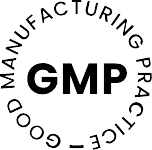Top 5 questions to ask when shopping for supplements
1 – What’s the price per day?
Take the price of any supplement divided by the number of doses in the bottle, and you now know the price per day. Now you can directly compare one product against any other in terms of cost.
2 – What’s the dosage per day?
Some vitamin and mineral supplements are priced cheaply because they contain very low doses, which are too small to have any real benefit. This is typical of supermarket supplements which sometimes contain no more nutrition than you could easily get from the fruit and veg aisle!
But that doesn’t mean the higher the dose, the better. This is a “Goldilocks” situation, where you really need an effective dosage that is just right – not too high and not too low.
An effective dose is sometimes called a therapeutic dose, meaning it’s high enough to deliver a medical benefit: these are the doses used in clinical research. A therapeutic dose is higher than the NRV (Nutrient Reference Value), which is simply the minimum amount you need to avoid developing a malnutrition illness (such as scurvy from not enough vitamin C).
The best place to look for medical research and learn about effective therapeutic doses of nutrients or herbal supplements is Google Scholar.
Let’s consider Omega-3 Fish Oil, for example. Some brands offer 1000mg fish oil per capsule, but you need to check the amount of EPA and DHA. If it contains less than 600mg of EPA and 400mg of DHA, chances are it won’t make much difference to our health.

When it comes to herbal supplements, you will notice a lot of them are herbal extracts. They’re expressed as ratios, like 10:1 extract or 12:1 extract. Look for the dosage of extract on the label, multiply it by the first number in the ratio and this will tell you how much you’re really getting.
Ashwagandha, for example, is often seen as a patented 10:1 extract called KSM-66 which is 10 times more concentrated than plain ashwagandha root powder. This means that 500mg of KSM-66 ashwagandha is equal to 10 x 500mg of ashwagandha root, in other words 5,000mg of ashwagandha root.
3 – Is it the best absorbed form?
Dosage isn’t the whole story. Nutrients come in different forms, and this affects the amount we can absorb. For some nutrients, it varies so much that you might absorb as much as four times more of a high-quality supplement than a cheaper alternative.
It’s important to look for the most bioavailable form of the nutrient. Cheap supplements may have low bioavailability, meaning your body can only absorb a small amount of the dose you see on the label.
When buying vitamins, look for activated forms and methylated forms. Activated chemical forms are ready for the body to use, and they are better absorbed and get to work as soon as they enter the body. Lower-quality B vitamins, for example, may use cheaper vitamin B12 called cyanocobalamin, whereas better quality supplements will have the better-absorbed methylcobalamin form.
Dosage isn't the whole story. Nutrients come in different forms, and this affects the amount we can absorb. For some nutrients, it varies so much that you might absorb as much as four times more of a high-quality supplement than a cheaper alternative.
It's important to look for the most bioavailable form of the nutrient. Cheap supplements may have low bioavailability, meaning your body can only absorb a small amount of the dose you see on the label.
When buying vitamins, look for activated forms and methylated forms. Activated chemical forms are ready for the body to use, and they are better absorbed and get to work as soon as they enter the body. Lower-quality B vitamins, for example, may use cheaper vitamin B12 called cyanocobalamin, whereas better quality supplements will have the better-absorbed methylcobalamin form.
List of vitamins and their most bioavailable forms
Vitamin A
- Retinyl Palmitate (preformed vitamin A)
- Beta-Carotene (less bioavailable, but converted to vitamin A in the body)
Vitamin B1 (Thiamine)
- Thiamine Mononitrate
Vitamin B2 (Riboflavin)
- Riboflavin-5-Phosphate
Vitamin B3 (Niacin)
- Niacinamide (also called Nicotinamide, less flushing than niacin)
- Nicotinamide Riboside (better absorption)
Vitamin B5 (Pantothenic Acid)
- Calcium Pantothenate
Vitamin B6
- Pyridoxal-5-Phosphate (P5P) (active form)
Vitamin B7 (Biotin)
- D-Biotin
Vitamin B9 (Folate)
- Methylfolate (5-MTHF) (L-methylfolate or 5-Methyltetrahydrofolate)
Vitamin B12
- Methylcobalamin (most bioavailable)
- Hydroxocobalamin (highly bioavailable)
- Adenosylcobalamin (also bioactive)
Vitamin C
- L-Ascorbic Acid
- Sodium Ascorbate (gentler on the stomach)
Vitamin D
- Cholecalciferol (D3) (most bioavailable form, better than D2)
Vitamin E
- D-Alpha-Tocopherol (natural form)
- Mixed Tocopherols (includes other beneficial tocopherols)
Vitamin K
Vitamin K2 (MK-7) (Menaquinone-7, highly bioavailable)
When it comes to minerals, there are usually several different compound forms to choose from. Magnesium oxide, for instance, is often cheaper than other forms, but it’s not well absorbed. In fact, most researchers find the average person absorbs just 12% of it. A lower dose of magnesium glycinate may be more effective even if it seems weaker on paper, because we can absorb as much as 80% or more.
Don't be fooled by nice-sounding names invented by the marketing department! Marine magnesium may sound nice and natural, for example, but its chemical form is magnesium oxide, which is by no means a good quality form of magnesium supplement.
List of minerals and their most bioavailable forms
Calcium
- Calcium Citrate (better absorbed than calcium carbonate)
- Calcium Hydroxyapatite (bioavailable, bone-supporting form)
Magnesium
- Magnesium Glycinate or Magnesium Bisglycinate (well-absorbed, less GI issues)
- Magnesium Citrate (well-absorbed, but may cause laxative effect)
- Magnesium Orotate
- Magnesium Lactate
- Magnesium Taurate
- Magnesium Malate
Zinc
- Zinc Picolinate (high absorption)
- Zinc Bisglycinate
- Zinc Citrate
- Zinc Gluconate
Iron
- Ferrous Bisglycinate (gentle on stomach, well-absorbed)
- Heme Iron (animal-based form, highly bioavailable)
Copper
- Copper Bisglycinate (high absorption)
- Copper Citrate
Selenium
- Selenomethionine (most bioavailable form)
Iodine
- Potassium Iodide (common and bioavailable)
Chromium
- Chromium Picolinate (well-absorbed)
Manganese
- Manganese Bisglycinate (bioavailable chelate form)
Molybdenum
Molybdenum Glycinate
Collagen is another supplement that comes in different forms. Hydrolysed collagen has a smaller molecule size, and is therefore far better absorbed, than plain (or undenatured) collagen, but you need to know exactly how small the molecules are. Good quality brands will reveal their molecular weight in Daltons: choose a brand that is 2000 Daltons or less.
Strength: Focus on effective doses and bioavailability.
Value: Look for the best cost per serving that delivers real benefits.
Quality: Prioritise purity, third-party testing, and transparent sourcing.
4 - Where’s the evidence I can trust this brand?
Most people would be surprised to learn how little regulation there is of the supplements industry. This means you either buy on blind trust, or you choose brands that spend a bit extra to prove their quality to you, the consumer.
Look for supplements made in certified Good Manufacturing Practices (GMP) facilities, which reassures you everything is really clean and well-organised, so they don’t make administrative errors like putting the wrong tablets in the wrong bottle.

Always look out for third-party lab testing and certification, which can reassure you the product is free from harmful additives or contaminants, like toxins from the soil in herbal supplements or mercury in fish oil.
Soil Association Organic Certification for herbal supplements also indicate quality, in a way that organic marks from other organisations may not. Certifications like “Friend of the Sea” for fish oil reassure you it’s produced in a sustainable way.
For example, if a fish oil supplement is third-party tested, it ensures that it’s free from contaminants like mercury or lead, which is especially important for fish-derived products. Look for certifications like NSF, USP, or GMP, indicating rigorous testing for safety and purity.
5 – Is this a clean supplement without nasty additives?
Some supplements contain nasty fillers like magnesium stearate or silicon dioxide.
Whilst additives do serve a purpose in supplements, often holding tablets together or making sure ingredients flow properly into their capsule, there are wholesome, food-based alternatives nowadays like rice flour or inulin.
Conclusion: Shopping for Supplements like an Expert
If you check these five criteria each time you look for a new supplement, you will be able to make an informed decision about quality, value for money and effective doses. If you are still unsure, try contacting the manufacturer: A good quality supplement brand will always reply to clarify any doubts you may have.







